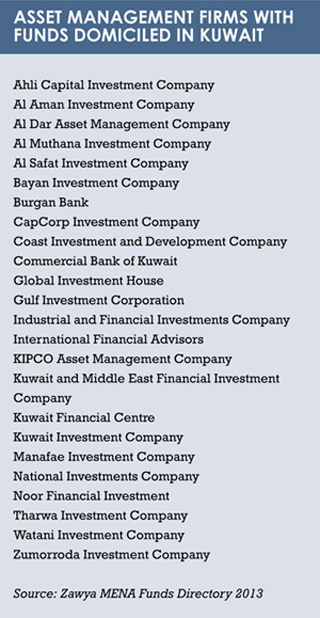 There are signs the country is beginning to implement its long-awaited development plan, which should unlock more government spending. Public-private partnerships are another trend to watch.
There are signs the country is beginning to implement its long-awaited development plan, which should unlock more government spending. Public-private partnerships are another trend to watch.
It is estimated that Kuwait has the world’s fifth largest oil reserves and is the eighth richest country, per capita, in the world, according to the International Monetary Fund. The government continues to make a surplus from oil exports – petroleum products account for about 80% of government revenue – and funnels its extra money into the Kuwait Investment Authority, the country’s sovereign wealth fund, which has been estimated to control some $300 billion.
 As in many other Gulf countries, government spending underpins the economy – and it has been increasing in recent years. Government spending is estimated to have grown 14% a year in the past three years, according to a report by the National Bank of Kuwait, mostly due to increases in wages and subsidies. “This has provided important support for the economy, and fuelled solid growth in the consumer sector,” says the report.
As in many other Gulf countries, government spending underpins the economy – and it has been increasing in recent years. Government spending is estimated to have grown 14% a year in the past three years, according to a report by the National Bank of Kuwait, mostly due to increases in wages and subsidies. “This has provided important support for the economy, and fuelled solid growth in the consumer sector,” says the report.
There is much optimism that government spending will continue to rise in future. In 2010, the country announced a 30 billion dinar ($106 billion) development plan, which included projects such as a metro system and railway, a port and a causeway. Yet the development plan has found itself caught in a series of delays. Long-running disagreements between the elected government and parliament led to deadlock and the dissolution, and re-election, of parliament. At the end of 2012, the country witnessed mass rallies and boycotts in protest.
But there are signs of progress. Construction started on the $2.6 billion Subiya Causeway project, a 37-kilometre causeway to connect Shuwaikh port with the Subiya New Town Development, near the border with Iraq. The project, which was tendered in 2006, should allow development of the Subiya promontory, thus kickstarting further economic activity.
Investors may be particularly interested to watch what happens with the Az-Zour North Power and Desalination project, which is part of the development plan and one of the country’s first experiments with a public-private partnership. In December 2013, the National Bank of Kuwait said the project had secured $1.4 billion in financing from a consortium of global banks.
The first phase of the project is a 1,500 megawatt natural gas-fired power plant and seawater desalination plant. Hyundai Heavy Industries recently took over the contract from a consortium led by GDF Suez and says the first phase should be completed by the first quarter of 2016. Progress on the project is seen as proof that the country’s plans are coming to fruition.
 “This is an indication of the improvement in the execution of Kuwait’s Development Plan,” said Shaikha al-Bahar, chief executive of NBK’s Kuwait business in a statement.
“This is an indication of the improvement in the execution of Kuwait’s Development Plan,” said Shaikha al-Bahar, chief executive of NBK’s Kuwait business in a statement.
Investors are divided about whether the Kuwait equity market represents good value. Some say Kuwaiti equities are overvalued, as a result of the large amount of liquidity sloshing around in this cash-rich country. Others say the strength of the Kuwaiti banking sector and the advanced state of the telcoms industry mean there are appealing stocks to be had.
One interesting trend to watch is the effect of MSCI’s decision to upgrade the UAE and Qatar to emerging markets, which is expected to happen in spring of 2014. The effect of the two countries leaving the MSCI Frontier Market index will create a gap that will only partly be offset by the return of Morocco as a frontier market.
As a result, Kuwait will become the largest component of the MSCI Frontier Market index by far, commanding nearly a third of the market capitalisation of the index. Passive frontier market funds will be required to increase their holdings in Kuwaiti stocks as a result of the index changes, and some active fund managers may choose to do the same.
©2014 funds global mena
